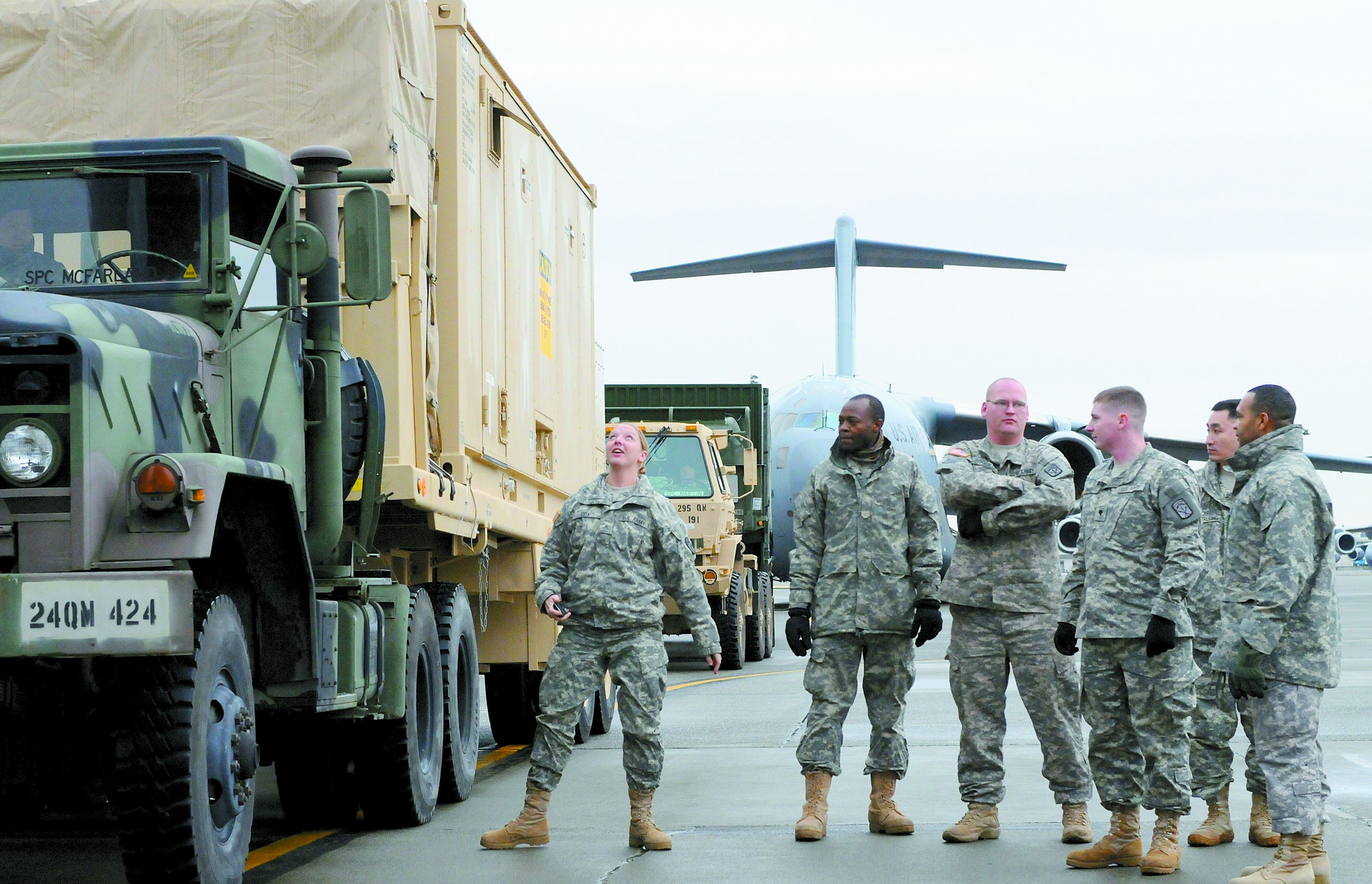JOINT BASE LEWIS-McCHORD, Wash. -- The Air Force has put out the word to its Joint Base Lewis-McChord Army counterparts to challenge its aircraft loading personnel.
That's the message coming from Air Force liaison officers at Joint Base Lewis-McChord who coordinate training and missions between the two services. At any given time, two C-17 Globemaster III airplanes are on the McChord Field flightline, available to Army units for practice loading all types of equipment.
All Air Force Air Mobility Liaison Officer Maj. Andrew Newman asks is for one-month's notice and ideally, a test for his crew members.
"We know how to load humvees; it's the weird stuff we want to play with," Newman said.
Soldiers from the 80th Ordnance Battalion, 593rd Sustainment Brigade, took the 62nd Airlift Wing's challenge last week, hauling out a 600-pound-capacity Laundry Advance System and a Reverse Osmosis Water Purification Unit.
The unit wanted to see if its personnel could strap the tallest and longest pieces of equipment in its inventory onto cargo-moving vehicles and fit them into the confines of the C-17 aircraft.
"If we have to move our equipment quickly, using only the Army, we'd have to slingload it," said Master Sgt. Darwin Wiggins, 80th Ordnance Bn., "but if you can put it in the back of a cargo plane and get it from Point A to Point B, that's better."
The exercise gave both Soldiers and Airmen new training opportunities they can't get within their own services. If Army units need to rapidly deploy equipment and vehicles faster than the time it would take to load onto ships, they will look to the Air Force for help. Soldiers have to understand Air Force loading regulations and requirements so the equipment doesn't become "frustrated cargo," Newman said, the term for equipment that sits on the flightline and doesn't move until deficiencies are corrected.
The mobile airlift system is similar to a big conveyor belt that continually moves logistical items through the air, he said. When Army units haven't submitted the proper load-bearing warrants that provide the equipment's dimensions and details to the aircraft loadmaster, the system bogs down, resulting in frustrated cargo.
"Airplanes need to keep moving, so if Army equipment isn't ready, it gets left behind," he said.
The training allows Air Force loadmasters, on the other hand, see the Army's newest logistical gear not widely used on Air Force installations. The five-ton vehicles carrying the ROWPU barely cleared the top of the C-17's hull entrance. A Soldier sitting atop the vehicle and checking clearance had to duck during the loading, but the unit fit. This experience-based information helps the loadmaster trust his air certification documents and assists inspections for equipment manifested in the future.
"The loadmaster makes assessments of what it takes to load (equipment) in the field all the time, but they don't see these pieces of equipment regularly," Newman said.
Both the Airmen and Soldiers recognized the value of having a joint base for this kind of training.
"This training lets the Army know what it takes to get on (the aircraft) and lets the Air Force know what it takes to tie down different pieces of equipment, and this increases velocity of airlift movement," Newman said.
Chief Warrant Officer 2 Rodney Rogers of 542nd Quartermaster Company said he's looking forward to working with McChord more to establish a positive working relationship and open doors for future training opportunities.
"Any time we can get an opportunity to work with another branch of service and do something different is amazing," Rogers said.
Newman looks forward to that relationship strengthening over time, and wants all Army units to know that opportunities exist to go beyond loading a static airplane and take equipment into the skies. Units planning exercises at JBLM Yakima Training Center can request the Air Force to transport uniquely sized and shaped equipment - all in the name of good training.
"We have never had anyone complain that this training isn't valuable," Newman said. "We don't get enough business for the benefit that it gives."
Lorin T. Smith: lorin.smith@nwguardian.com




Social Sharing